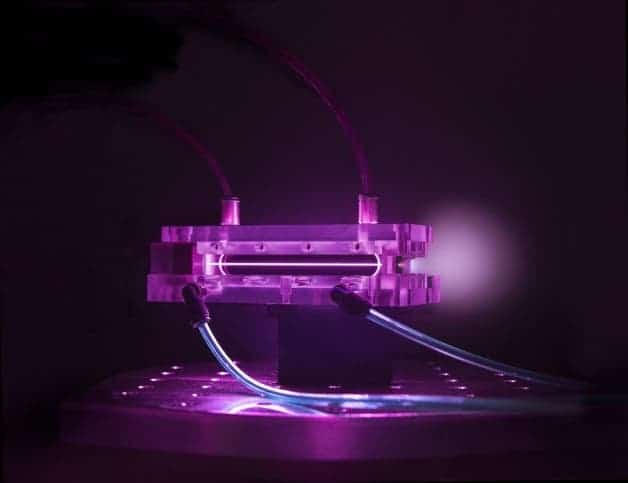With the help of the most powerful laser in the world, scientists have achieved the highest energies yet in a compact particle accelerator. The tabletop-sized device accelerates electrons to high speeds by firing high power laser pulses in a controlled manner through a plasma tube only 9 centimeters in size. The accelerator ring at the Large Hadron Collider in CERN is 17 miles long . Admittedly, we’re comparing apples and oranges in a way, since the LHC accelerators hadrons (protons), while the Lawrence Berkeley National Laboratory accelerator only works for electrons. Nevertheless, it’s a breakthrough achievement one that might help miniaturize bulky medical devices and slash costs.
The most efficient particle accelerator in the world

In the laser-plasma accelerator setup, the BELLA (Berkeley Lab Laser Accelerator) was used to fire petawatt pulses (a million billion watts) onto a charged-particle gas called plasma to get the particles up to speed. When the laser pulse ripples through the plasma, it creates a channel in its path followed by waves that trap the free electrons and accelerate them to high energies, akin to how a surfer skims down the face of a wave to gain momentum. Thus, through the nine-centimeter-long plasma tube electrons were accelerated to a speed equivalent to 4.25 giga-electron volts. Considering the short distance, this means an energy gradient 1000 times greater than traditional particle accelerators and marks a world record energy for laser-plasma accelerators.
“This result requires exquisite control over the laser and the plasma,” says Dr. Wim Leemans, director of the Accelerator Technology and Applied Physics Division at Berkeley Lab and lead author on the paper. The results appear in the most recent issue of Physical Review Letters.
Particle accelerators transfer energy so that protons, electrons or positrons (anti-electron) can reach high energies. When these particles are collided at these tremendous speeds, funny things start to happen. If billions of collisions are made, chances have it that all sorts of elementary particles, some lasting only a fraction of a second, can be seen. This is how the famed Higgs boson was confirmed at CERN only a few years ago. In a way, a high-energy particle accelerator like the LHC at CERN is a time machine, because it replicates conditions similar to those in place mere moments following the Big Bang.
Because of the tremendous energies involved, Leemans and colleagues first made a computer simulation using gear available at the National Energy Research Scientific Computing Center (NERSC) to test the setup before any shots were fired. This way, the researchers selected the optimal region of operation and the best way to control the accelerator. BELLA’s pin-point accuracy sure helped, too.

“We’re forcing this laser beam into a 500 micron hole about 14 meters away, “ Leemans says. “The BELLA laser beam has sufficiently high pointing stability to allow us to use it.” Moreover, Leemans says, the laser pulse, which fires once a second, is stable to within a fraction of a percent. “With a lot of lasers, this never could have happened,” he adds.
The plan is to accelerate electrons to even greater energies, with a near-future goal set to 10 giga-electron volts. Tweaking the plasma channel’s density through which the laser light flows is the first obvious step – they need to make the channel’s shape just in the right way to handle more-energetic electrons.


